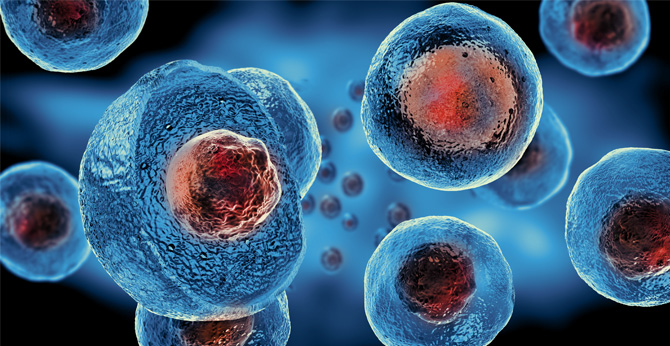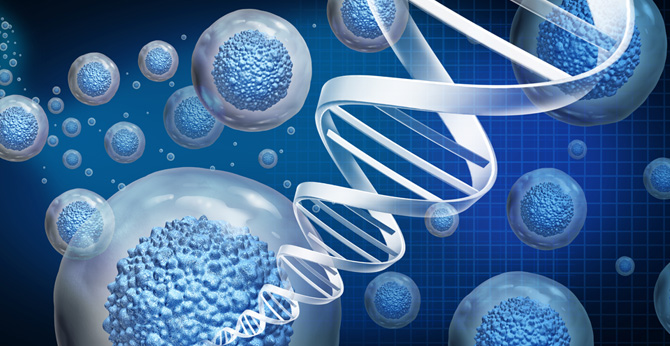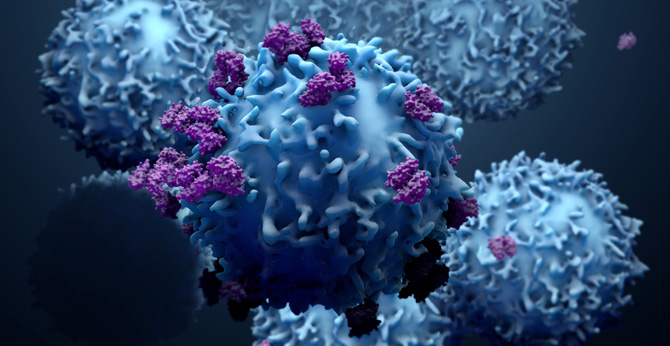All products and services are For Research Use Only and CANNOT be used in the treatment or diagnosis of disease.
The vector of anti-CD38 chimeric antigen receptor (CAR) is constructed for the engineering of T cells to target human CD38. The T cells are genetically modified through transduction with a retroviral vector expressing scFv of anti-CD38 antibody linked to 41BB and CD3ζ signaling domains. And the vector product was designed for the treatment of Multiple myeloma.
|
CAR Construction : 028-41BB-CD3ζ
Fig.1 Efficacy of CD38-CART cells at lysing MM cell lines. In 24 h cytotoxicity assays, three different types of CD38-CART cells were tested against two MM cell lines with different CD38 expression levels: (Upper) U266, a CD38− cell line, (Bottom) UM9, a CD38+ cell line. Drent, E., Groen, R. W., Noort, W. A., Themeli, M., van Bueren, J. J. L., Parren, P. W., ... & Mutis, T. (2016). Pre-clinical evaluation of CD38 chimeric antigen receptor engineered T cells for the treatment of multiple myeloma. Haematologica, 101(5), 616. |
|
CAR Construction : 028-41BB-CD3ζ
Fig.2 Cytokine release assay. 24 hr after co-incubation with the CD38+ target cell line UM9 or CD38 target U266, E:T ratio 1:1, cytokine secretion by mock or CD38-CAR028, A1, A4, B1, or B3 T cells was measured with a flow-cytometry-based assay in the cell-free supernatants. Drent, E., Themeli, M., Poels, R., de Jong-Korlaar, R., Yuan, H., de Bruijn, J., ... & Mutis, T. (2017). A rational strategy for reducing on-target off-tumor effects of CD38-chimeric antigen receptors by affinity optimization. Molecular therapy, 25(8), 1946-1958. |
|
CAR Construction : 028-41BB-CD3ζ
Fig.3 CART cell phenotyping assay. Phenotypic profile of each CD38-CAR T cell type was determined before (week 0) and after (week 1) expansion with markers CD45RA and CD62L. Percentage of total cells is depicted for naive (CD45RA+/CD62L+), central memory (CM) (CD45RA/CD62L+), effector memory (EM) (CD45RA/CD62L), and effector(CD45RA+/CD62L). Drent, E., Themeli, M., Poels, R., de Jong-Korlaar, R., Yuan, H., de Bruijn, J., ... & Mutis, T. (2017). A rational strategy for reducing on-target off-tumor effects of CD38-chimeric antigen receptors by affinity optimization. Molecular therapy, 25(8), 1946-1958. |
|
CAR Construction : 028-41BB-CD3ζ
Fig.4 In vivo efficacy of CD38-CAR-T cells. Mice were i.v. injected with 10* 10^6 cells of tumor cell line UM9 and treated 1 week after with i.v. injections of 5 * 10^6 mock, high-affinity CD38-CAR028, or low-affinity CD38-CARA4 T cells. Drent, E., Themeli, M., Poels, R., de Jong-Korlaar, R., Yuan, H., de Bruijn, J., ... & Mutis, T. (2017). A rational strategy for reducing on-target off-tumor effects of CD38-chimeric antigen receptors by affinity optimization. Molecular therapy, 25(8), 1946-1958. |
|
CAR Construction : 028-41BB-CD3ζ, 028-CD28-CD3ζ, 028-CD28-CD3ζ-41BBL
Fig.5 The lytic capacity of CD38-CART cells. The series of high and low affinity CAR T cells were incubated with Firefly-Luciferase-transduced human MM cell line UM9. Drent, E., Poels, R., Ruiter, R., van de Donk, N. W., Zweegman, S., Yuan, H., ... & Themeli, M. (2019). Combined CD28 and 4-1BB Costimulation Potentiates Affinity-tuned Chimeric Antigen Receptor–engineered T CellsDual Costimulation Empowers Very Low–affinity CAR-T Cells. Clinical Cancer Research, 25(13), 4014-4025. |
|
CAR Construction : 028-41BB-CD3ζ, 028-CD28-CD3ζ, 028-CD28-CD3ζ-41BBL
Fig.6 Cytokine release assay. 24 hours after co-incubation with UM9 (E:T ratio 1:1), cell supernatants were harvested to measure cytokine secretion with a flow cytometry-based assay. Graph shows the secretion of IFN-γ, TNF and IL-2. Drent, E., Poels, R., Ruiter, R., van de Donk, N. W., Zweegman, S., Yuan, H., ... & Themeli, M. (2019). Combined CD28 and 4-1BB Costimulation Potentiates Affinity-tuned Chimeric Antigen Receptor–engineered T CellsDual Costimulation Empowers Very Low–affinity CAR-T Cells. Clinical Cancer Research, 25(13), 4014-4025. |
|
CAR Construction : 028-41BB-CD3ζ, 028-CD28-CD3ζ, 028-CD28-CD3ζ-41BBL
Fig.7 Exhaustion of CD38-CAR T cells. Pie charts illustrating the % of cells expressing either 0, 1 (PD-1+, Lag3+ or TIM3+), 2 (PD-1+/Lag3+ or PD-1+/TIM3+ or Lag3+/TIM3+) or 3 (PD-1+, Lag3+ and TIM3+) exhaustion markers gated on live CD3+CAR+ cells. Drent, E., Poels, R., Ruiter, R., van de Donk, N. W., Zweegman, S., Yuan, H., ... & Themeli, M. (2019). Combined CD28 and 4-1BB Costimulation Potentiates Affinity-tuned Chimeric Antigen Receptor–engineered T CellsDual Costimulation Empowers Very Low–affinity CAR-T Cells. Clinical Cancer Research, 25(13), 4014-4025. |
|
CAR Construction :
Fig.8 Binding affinity of anti-CD38 scFv antibodies. Binding kinetics of anti-CD38 028 scFv antibodies against purified hCD38-ECD were investigated by biolayer interferometry. Ma, P., Ren, P., Zhang, C., Tang, J., Yu, Z., Zhu, X., ... & Lerner, R. A. (2021). Avidity‐Based Selection of Tissue‐Specific CAR‐T Cells from a Combinatorial Cellular Library of CARs. Advanced Science, 8(6), 2003091. |
More Published Data More Published Data
There are currently no customer reviews or questions for Anti-CD38 (028) h(41BB-CD3ζ) CAR, pCDCAR1 (CAR-MZ160). Click the button below to contact us or submit your feedback about this product.
For research use only. Not intended for any clinical use. No products from Creative Biolabs may be resold, modified for resale or used to manufacture commercial products without prior written approval from Creative Biolabs.
For any technical issues or product/service related questions, please leave your information below. Our team will contact you soon.
 NEWSLETTER
NEWSLETTER
The latest newsletter to introduce the latest breaking information, our site updates, field and other scientific news, important events, and insights from industry leaders
LEARN MORE NEWSLETTER NEW SOLUTION
NEW SOLUTION
CellRapeutics™ In Vivo Cell Engineering: One-stop in vivo T/B/NK cell and macrophage engineering services covering vectors construction to function verification.
LEARN MORE SOLUTION NOVEL TECHNOLOGY
NOVEL TECHNOLOGY
Silence™ CAR-T Cell: A novel platform to enhance CAR-T cell immunotherapy by combining RNAi technology to suppress genes that may impede CAR functionality.
LEARN MORE NOVEL TECHNOLOGY NEW SOLUTION
NEW SOLUTION
Canine CAR-T Therapy Development: From early target discovery, CAR design and construction, cell culture, and transfection, to in vitro and in vivo function validation.
LEARN MORE SOLUTION